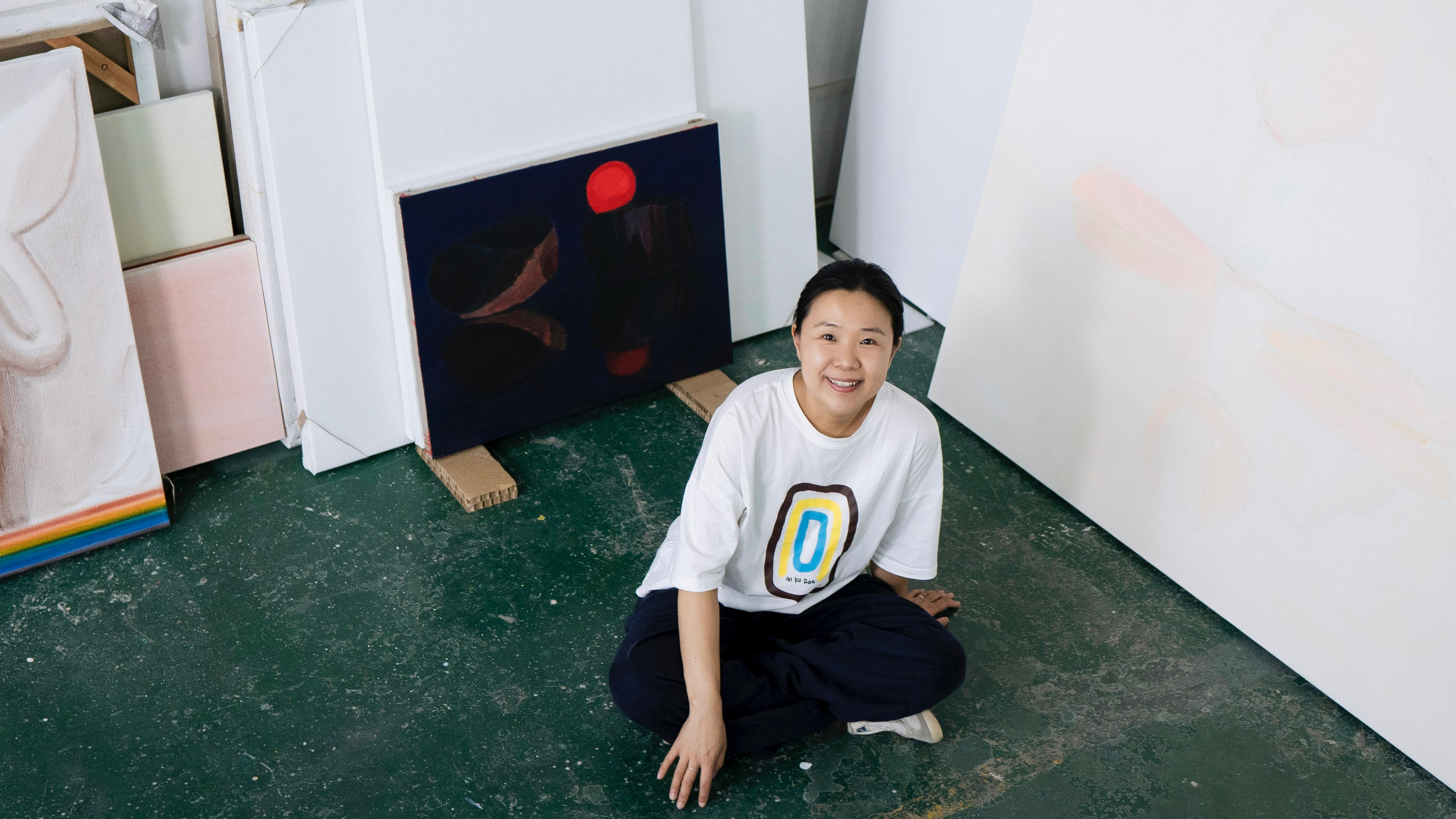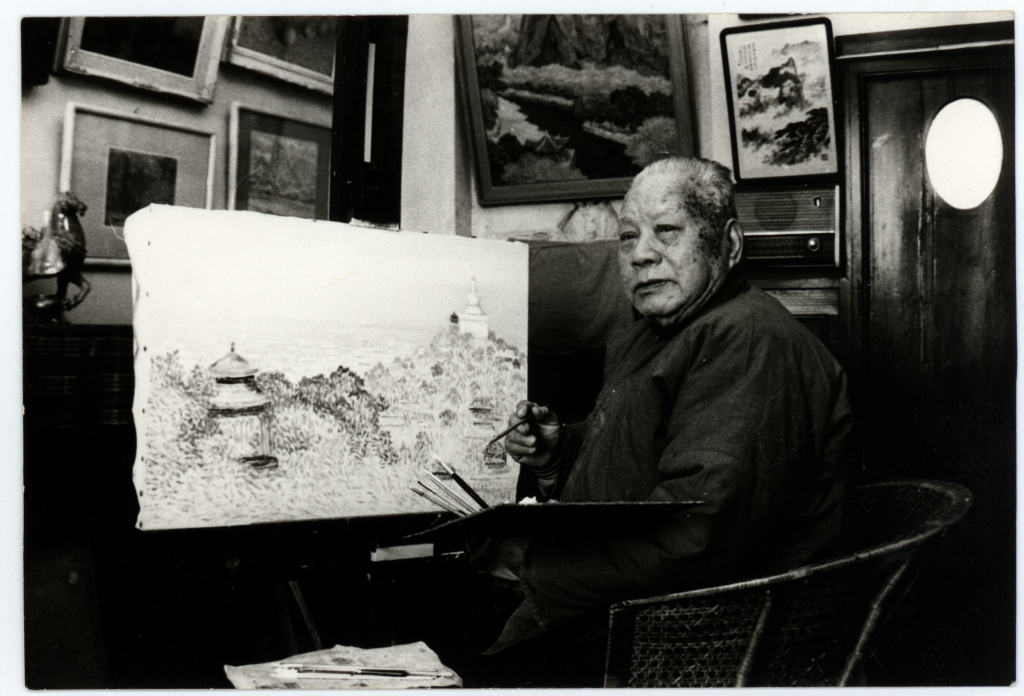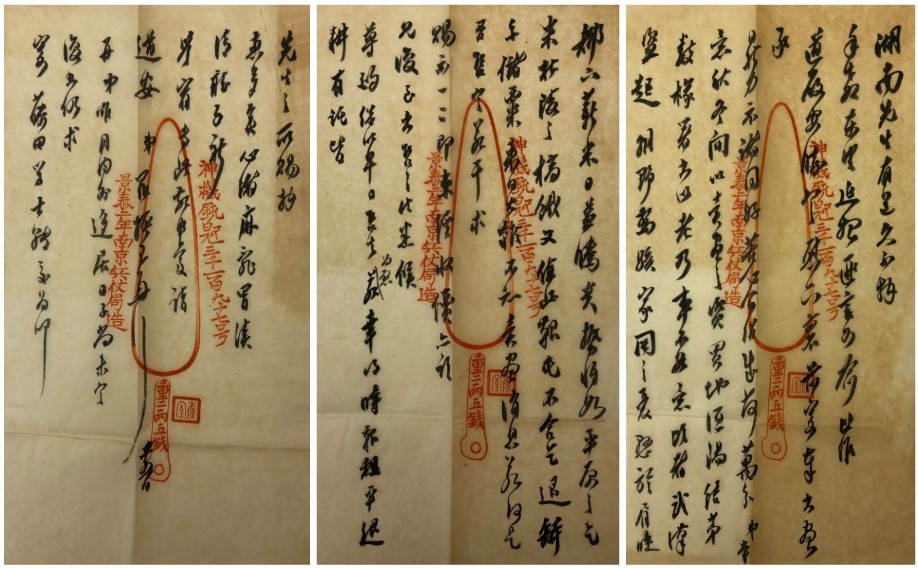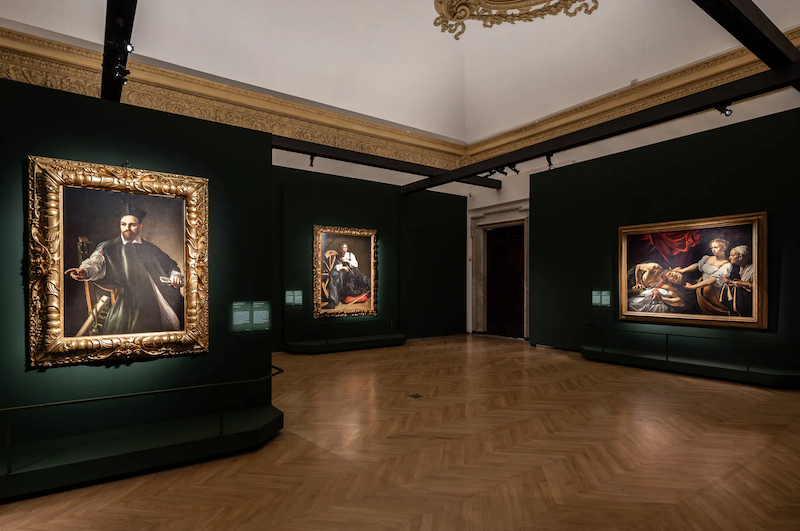

In the city of Shanghai, artists have been creating in their own ways, either facing their inner selves or going out into the world.
"The Paper·Art Review" will soon launch a series of "Artists in Shanghai", using artists' studios as a clue to get closer to artists living in Shanghai and experience their daily lives, creations and thoughts. This issue takes us into the studio of artist Shi Zhiying in Jiading District, Shanghai.
Currently, Shi Zhiying’s first solo exhibition in Europe, “Kiss of All Things”, is being held in Antwerp, Belgium. She is well-known for her nearly monochrome brushstrokes that depict a wide range of scenes (such as stones, sea, sand, grass, etc.).
In addition to paintings, her studio has a collection of picture albums and books, among which Italian writer Calvino's "Literary Memorandum of the New Millennium" has been read repeatedly by her. Those words may make her paintings jump out of themselves, and a slow but continuous transformation occurs between the painting plane and the state of feeling.

Shi Zhiying in the studio.
In Shi Zhiying's first solo exhibition in Europe, "All Things Are Intimate", held at the Vervoordt Gallery in Antwerp, Belgium, the stones in the painting are silent like whisperers; the sea is constantly growing but restrained. The juxtaposition of two seemingly opposing objects - hard stone and flowing water - conveys a kind of inner intimacy and order, a slow dialogue deep in time.
Born in Shanghai in 1979, this artist spent her time at the Shanghai University Academy of Fine Arts from high school to her master's degree. After graduating with a master's degree, she worked at the Shanghai Oil Painting and Sculpture Institute. Painting without distraction has become her daily routine and has also run through most of her life so far. Although she grew up in the city, the world she paints is like a gaze: both calm and warm, as if she regards painting as a kind of practice.

Shi Zhiying's solo exhibition "All Things Are Close" in Antwerp, Belgium
The Sea and the Stone: Quiet Power and Solid Objects
The artist chose the sea as the theme of her creation because of her experience of watching the sea. Many years ago, she went to visit a friend who was studying in the United States. When she climbed up a lighthouse and watched the sea from a height, "she suddenly had a special experience that her body disappeared, but her consciousness remained, and she seemed to have entered a wider space and time."
This reminds me of the description at the end of To the Lighthouse by American female writer Virginia Woolf, where Lily Briscoe turned to her canvas swiftly, "with a sudden and strong impulse, as if she saw the scene clearly in an instant, she added a stroke in the center of the canvas. The painting is done; it's done. Yes, she put down the brush in her hand with extreme fatigue and thought: I finally painted the fantasy that has lingered in my mind for many years."

Shi Zhiying, “Waves No.1&2”, 2021, oil on canvas, 240x180cmx2 sheets
However, artistic creation is not necessarily an instantaneous burst. How to transform the instantaneous feeling into a picture is often accompanied by a lot of thinking and deliberation. After the instantaneous experience, Shi Zhiying recorded the state of the sea by taking photos and videos, recalling the auditory and olfactory experience at the seaside, and recording various sea-related scenes. She tried to use blue - the most obvious choice - but soon realized that color is caused by the illusion relationship between the eyes and light waves. So she turned to black and white, removing the emotional interference of color and depicting the sea in black and white. In 2009, her first solo exhibition at the Ullens Center for Contemporary Art in Beijing exhibited the "colorless and boundless" sea at that stage. In Shi Zhiying's "Sea" series that continues to this day, from the calm water and the calm wind to the connection of each stroke, it changes rapidly, one after another, and even endlessly.

Shi Zhiying, “Deep Blue Sea No.1”, 2025, 180x250cm
Compared to the vastness of the sea, Shi Zhiying's observation of stones is microscopic. She studies various stones, from meteorites to gemstones at hand, exploring how to express the texture and texture of stones with different strokes, and then builds the subtle relationship between stones into a scene filled with interest.

Shi Zhiying, “Gem and Mirror 26”, 2025, oil on canvas, 115 x 150cm
"Like Muxi's several persimmons and Bada's two small fishes, there is a connection between them, rather than just two still lifes," she said. "Sometimes, the overlapping of stones will create a direction, just like when I use stones to build 'statues'. Some of the anthropomorphic relationships are intriguing." Here, it is no longer a still life, but a character with emotion.
The reason why stones and the sea attract her is because they are unpredictable. "This leads me to try different things in my paintings, rather than repeating the same stylized image over and over again. For example, stones have a rough side and a smooth and shiny side like gemstones; the same is true for the sea surface, which can have obvious waves or be calm and quiet. How can these changes be expressed through painting strokes?"

Shi Zhiying, “Sky Blue Sea No.1”, 2025, oil on canvas 233x175cm
In the past two years, Shi Zhiying has reintroduced color into her paintings and integrated it into the relationship between brushstrokes, structure, and emotions. In the picture, she constantly adjusts the way they meet. The first solo exhibition in Europe presents the artist's thinking on these two long-term research themes (the hardness of the land and the quiet power of the sea) in the past two years. In Shi Zhiying's paintings, they no longer belong to nature, but have become human projections and symbols of emotions.

Shi Zhiying, Gem and Mirror Image No.31, 2025, 53×70cm
Painting is connected, experience the feel of ancient Chinese painting through oil painting
Although Shi Zhiying's current creations are mostly oil paintings, she practiced calligraphy for a period of time when she was a child. However, for a child, this kind of day-to-day training was too boring. After that, she also learned electronic piano and other "popular projects at the time", but she did not continue.
Until the early 1990s, when her mother was attending night school, she was sitting aside painting by herself. She was spotted by a classmate of her mother who could paint and became her enlightenment teacher. From then on, she entered the world of painting. After junior high school, this teacher recommended a teacher from the Academy of Fine Arts, and she began formal learning.
After that, he entered the Affiliated High School of Shanghai University of Fine Arts, and later, he was admitted to the Oil Painting Department of Shanghai University of Fine Arts. From undergraduate to graduate school, until now, "I am still very interested in painting."

In a corner of Shi Zhiying's studio, Fan Kuan's "Traveling in Mountains and Rivers", his creative manuscripts, and picture albums are displayed together.
"When I was young, I didn't understand Chinese painting very well, and I didn't appreciate it very much. I thought it was old-fashioned." Shi Zhiying said with a smile, "When I was young, I was easily prejudiced. At that time, I thought oil painting was fashionable and contemporary." But as time went by, especially after working at the Shanghai Oil Painting and Sculpture Institute, she began to realize that there is a lot hidden in ancient calligraphy and painting. Like a "make-up lesson", from reading painting theories and looking at picture albums to repeatedly facing authentic works in museums, Shi Zhiying gradually established an understanding of Chinese painting, and those things that she once "didn't understand" gradually emerged in her paintings.
Her experience of practicing calligraphy in her early years seems to have laid the foundation for the present. In her spare time, she would copy the "Shimen Song" or the "Diamond Sutra". "Writing is purely for the sake of calming down, without considering the results." At the same time, between each stroke of the brush, there is also a kind of "breathing logic" [Note: originated from the French sinologist philosopher François Jullien, used to describe the dynamic spiritual rhythm].

Shi Zhiying, “Wave 4”, 2021, 130x200cm, oil on canvas (The sea influenced by Gong Xian)
Shi Zhiying's studio is also filled with many ancient Chinese painting albums and theories. She has repeatedly studied everything from Dunhuang statues and colors to Gong Xian's landscapes. When she was stuck in the blank space of the waves, Gong Xian's method of handling smoke and clouds by overlapping the edges and changing the light and dark gave her inspiration - ancient Chinese paintings are not a distant tradition, but a "contemporary tool" that can continue to provide practical help.

A corner of Shi Zhiying's studio.
In her opinion, the ancients' depictions of mountains, rocks, water waves, and clouds and mist all dealt with the question of "how to convey time and structure through brushstrokes." "In ancient Chinese calligraphy and painting, the changes in brushstrokes carry both personal touch and traces, as well as the physical texture of the object and the interest of brushstrokes. The balance of the three directly leads to a calm and objective state of selflessness."

Shi Zhiying, “Rock 8”, 2016, oil on canvas, 30 x 40cm
In her opinion, the older generation of Chinese oil painters have already begun the practice of integrating oil painting with ancient Chinese painting. At the "Poetry of Colors - Zhou Bichu's Donated Art Exhibition" held at the Oil Painting and Sculpture Institute Art Museum not long ago, Shi Zhiying felt that "although influenced by Impressionism, Zhou Bichu's brushstrokes are completely different from Impressionism. Impressionist brushstrokes are a deconstruction of light, while the brushstrokes of trees in his paintings are more like the "dots" in Chinese paintings, expressing the unity of nature and inner state." She believes that this is in line with the tradition of "writing" in Chinese painting. With one stroke, it not only depicts the shape of an object, but also includes the dynamic trajectory and emotional "feel" of a person.

Yuz Museum, 2024
As Calvino described in "Memorandum on Literature of the New Millennium", "It is possible to imagine a work that is conceived from outside the self, thereby escaping the limited perspective of the individual self and entering not only various selves like our own, but also giving language to things that have no language, to the birds perched on the edge of the gutter, to the trees in spring and the trees in autumn, to stone, to cement, to plastic." Creation is not about seeking a deterministic result, but about feeling the unity of man and nature, the unity of self and nature, and establishing order and rhythm between light and heavy, obvious and complex.
In the layers of brushstrokes and limited colors, the artist constructs his own painting logic: the physical properties of the object, the traces of the artist's participation and psychological state can be seen in the brushstrokes.
Note: The studio photos in this article were taken by a reporter from The Paper. The copyright of some works belongs to the artist and Vervoordt Gallery
- VculHVYmaJU07/25/2025
- tUEizjtSyun07/24/2025


